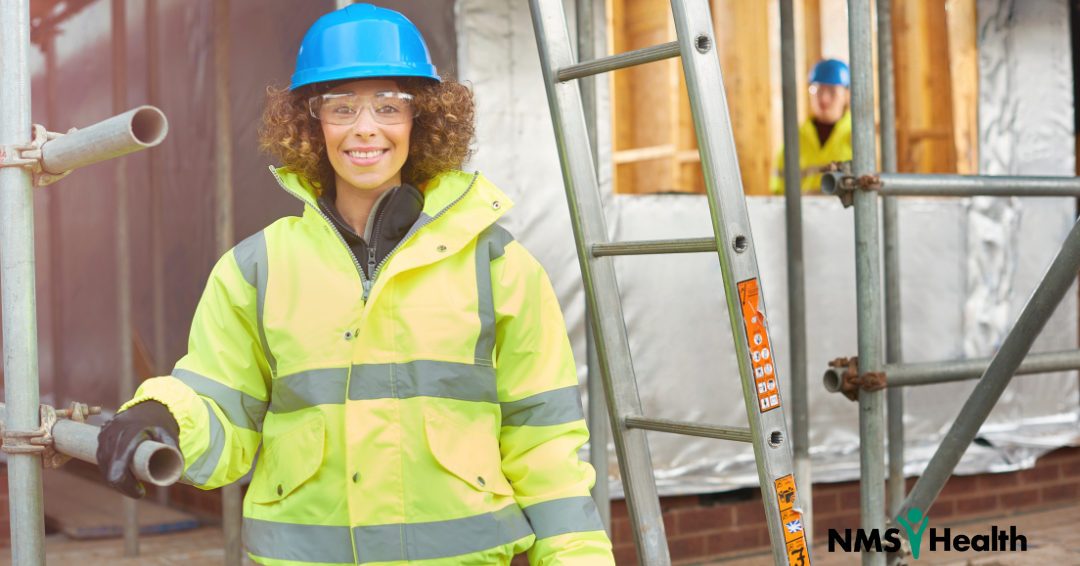The construction industry, historically dominated by men, is undergoing a significant transformation, with more women joining its ranks. While this shift is gradual, there has been a notable 2% increase in the rate of women in construction since 2010. Unfortunately, obstacles remain. Nearly 7 out of 10 women on construction sites struggle to find appropriate Personal Protective Equipment (PPE). Ill-fitting PPE is not only uncomfortable but can be a significant safety concern, underscoring a fundamental principle – fit matters.
A recent report from Lumber delves into critical issues impacting women in construction. The study gathered insights from 100 women construction owners, executives, and decision-makers. Among the key findings is the scarcity of gender-friendly safety equipment, with 67% of respondents citing a lack of smaller-sized PPE and safety gear tailored to women’s bodies. Additionally, 85% expressed concerns over the absence of maternity-friendly safety gear, highlighting a significant gap in addressing the needs of pregnant workers.
Addressing Systemic Challenges
The availability of gender-specific safety gear, such as vests, hard hats, and suits tailored to women’s bodies, remains limited. Many times, PPE for women on sites is a result of a “one size smaller” policy. Holly Burgess, CSP, EHS manager for Siemens Mobility, previously discussed challenges faced by women in acquiring suitable PPE. These challenges encompass ill-fitting work gloves and safety goggles, a lack of maternity PPE for expectant mothers, and gear that is either too long or bulky, posing tripping hazards or exposing workers to additional risks. Burgess emphasized that poorly fitting PPE can have not only physical but also psychological implications for workers, undermining their confidence and productivity.
“As more women enter positions requiring PPE, the lack of suitable gear becomes increasingly evident,” she explained. “It’s concerning when the very equipment meant to protect workers ends up creating additional safety hazards. Properly fitting PPE not only enhances physical comfort but also instills confidence and promotes productivity.”
While options exist in the market, many companies have been slow to incorporate them into their inventory. Additionally, the issue of maternity-friendly safety equipment has yet to be adequately addressed, leaving expectant mothers vulnerable on job sites or leading them to curtail their job duties or change roles. Unfortunately, with only 4% of women currently working on construction sites, it is understandable that construction companies could find supplying safety equipment in bulk challenging. However, this scenario may see improvement as more women enter the field.
Moving Towards Inclusivity
Despite the challenges, progress continues. Initiatives like Lumber’s “She Builds Nation” report shed light on the obstacles faced by women in construction while highlighting positive trends. The report revealed that 72% of respondents acknowledged increased opportunities for women’s advancement within the industry. Moreover, 67% reported that they experienced relatively smooth integration into male-centric environments, provided inclusive organizational cultures were fostered.
“In unveiling the ‘She Builds Nation’ report, we’re not just shedding light on the challenges faced by women in construction; we’re igniting a conversation and catalyzing action towards a more inclusive, equitable industry,” said Shreesha Ramdas, CEO, and founder of Lumber. “At Lumber, we’re committed to empowering women in construction, and this report underscores the urgency of addressing systemic barriers and fostering environments where every individual can thrive,” echoed Meghan Schoen, Lumber’s director of client relations.
Looking Ahead
As the construction industry undergoes transformation, women are becoming indispensable in shaping its trajectory. Associated Builders and Contractors project a demand for approximately 501,000 additional workers by 2024. With a surge in job openings, the construction sector is bound to witness a rise in women’s involvement. However, this underscores the urgent need to ensure adequate protection on worksites. Recognizing that fit matters, it becomes imperative to provide gender-appropriate and maternity-friendly safety equipment to safeguard women in construction. By dismantling barriers, defying stereotypes, and embracing opportunities, women in construction are leading the charge toward a more inclusive, fair, and vibrant workforce.
Ready to elevate your workforce’s health? Partner with NMS Health for your occupational health screenings. With NMS Health, you are not just identifying and preventing future illness; you’re investing in a safer, healthier future for your team. Get started today!


